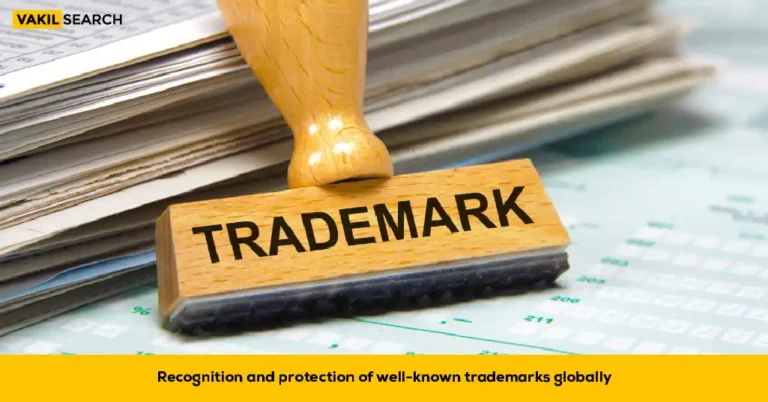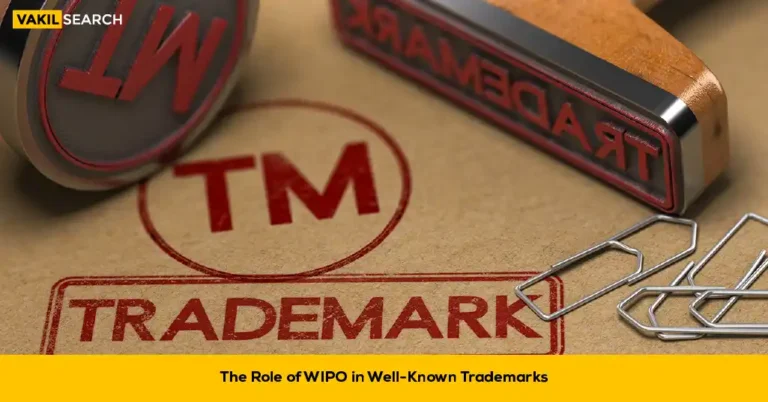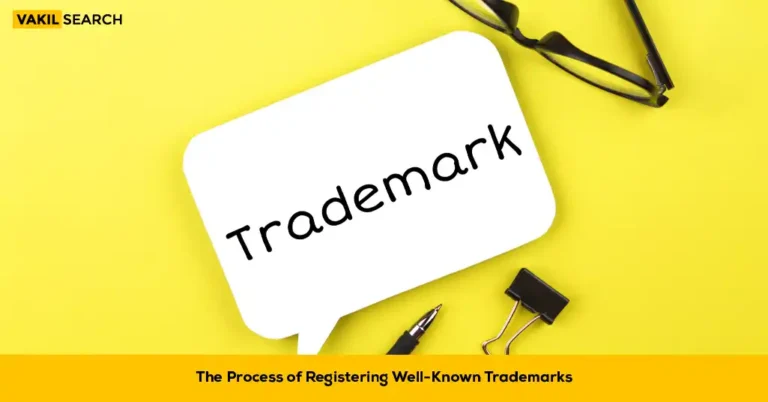There are numerous instances of two brands using the same name. For example, a famous tea brand and a renowned chain of hotels have shared the name Taj in their names? So, what is the point of registering a trademark?
Trademarks of goods and services are grouped into different trademark classes. Each class requires a different registration. However, there are times when a tm class search can be extremely generic. For example, Facebook owns the trademark of the word ‘Face’ in several countries. Is this something that the North Face footwear brand should be concerned about? If not? Why? This is due to the fact that the governments categorize all trademark registrations according to different trademark classes (i.e. the industry you operate within).
The Importance of Trademarks as Intellectual Property Protection:
- Trademarks are vital for brand recognition and reputation. They distinguish businesses and products, building customer loyalty and trust.
- Trademarks grant exclusive rights, preventing unauthorised use and confusion in the market.
- Trademarks protect consumers by ensuring they can identify genuine products and avoid counterfeits.
- Trademarks are valuable assets, appreciating over time and contributing to business value.
- Trademarks provide legal protection against infringement, allowing owners to take action and seek damages.
- Trademarks can be registered internationally, enabling global brand protection.
Trademark Classes and Their Purpose:
- Trademark classes classify goods and services for registration and protection.
- The Nice Classification is a widely used system with 45 classes.
- Classes ensure uniqueness and help identify conflicts during registration.
- Classes provide clarity and precision in describing goods and services
- Classes facilitate international harmonisation and simplify trademark registration.
- Classes aid in market research, analysis, and understanding of consumer behavior.
- Classes help determine the scope of trademark rights and enforce them against infringers.
Overview of the Nice Classification System
The Nice Classification System is an internationally recognised classification system used for the registration and classification of trademarks. It provides a standardised framework for categorising goods and services associated with trademarks. The system was established by the Nice Agreement, which is administered by the World Intellectual Property Organisation (WIPO).
The Nice Classification System consists of a total of 45 classes, with 34 classes designated for goods and 11 classes for services. Each class represents a specific category of goods or services. The classification system helps in organizing and classifying a wide range of products and services into distinct categories.
34 classes for goods and 11 classes for services
Here is a brief overview of the 34 classes for goods:
Class 1: Chemicals used in industry, science, and photography.
Class 2: Paints, varnishes, and colorants.
Class 3: Cosmetics and cleaning preparations.
Class 4: Industrial oils and greases, fuels, and illuminants.
Class 5: Pharmaceuticals and medical preparations.
Class 6: Metals and metal goods.
Class 7: Machines and machine tools.
Class 8: Hand tools and implements.
Class 9: Scientific, nautical, surveying, and electrical apparatus and instruments.
Class 10: Medical and surgical instruments and apparatus.
Class 11: Apparatus for lighting, heating, and cooking.
Class 12: Vehicles; apparatus for locomotion by land, air, or water.
Class 13: Firearms; ammunition and projectiles.
Class 14: Precious metals and their alloys; jewelry, precious stones.
Class 15: Musical instruments.
Class 16: Paper and cardboard; printed matter; stationery.
Class 17: Rubber, gutta-percha, gum, asbestos, mica, and goods made from these materials.
Class 18: Leather and imitations of leather; animal skins; trunks and traveling bags.
Class 19: Building materials, non-metallic rigid pipes for building.
Class 20: Furniture, mirrors, picture frames.
Class 21: Household or kitchen utensils and containers.
Class 22: Ropes, string, nets, tents, awnings.
Class 23: Yarns and threads for textile use.
Class 24: Textiles and textile goods.
Class 25: Clothing, footwear, headgear.
Class 26: Lace and embroidery; ribbons and braid.
Class 27: Carpets, rugs, mats, and matting.
Class 28: Games and playthings; gymnastic and sporting articles.
Class 29: Meat, fish, poultry, and game; meat extracts.
Class 30: Coffee, tea, cocoa, sugar, rice, and spices.
Class 31: Agricultural, horticultural, and forestry products.
Class 32: Beers, mineral and aerated waters, non-alcoholic beverages.
Class 33: Alcoholic beverages.
Class 34: Tobacco; smokers’ articles; matches.
And here are the 11 classes for services:
Class 35: Advertising and business services.
Class 36: Insurance and financial services.
Class 37: Building construction and repair services.
Class 38: Telecommunications services.
Class 39: Transport and storage services.
Class 40: Treatment of materials services.
Class 41: Education and entertainment services.
Class 42: Scientific and technological services.
Class 43: Services for providing food and drink.
Class 44: Medical and veterinary services.
Class 45: Personal and social services.
The Nice Classification System is widely used by trademark offices worldwide, providing a consistent and uniform approach to trademark registration and protection across different countries and jurisdictions. It helps in the efficient classification and identification of goods and services associated with trademarks, facilitating effective trademark searches, and ensuring accurate and precise trademark registrations.
Importance of selecting the correct class(es) relevant to your specific goods or services
Selecting the correct class(es) for your goods or services is crucial when registering a trademark. Here’s why it’s important:
Legal Protection: Accurately choosing the appropriate classes ensures your trademark receives legal protection in those specific areas, preventing conflicts and strengthening your rights.
Avoiding Rejection or Opposition: Incorrect class selection can lead to rejection or opposition during the registration process. Choosing the right classes minimizes the risk of such issues, ensuring a smoother process.
Brand Visibility and Distinctiveness: Selecting the right classes establishes a clear brand identity and enhances visibility and recognition among consumers, effectively communicating the nature and quality of your offerings.
Targeted Protection and Enforcement: Registering your trademark in the correct classes allows targeted protection against potential infringers in the same industry. It empowers you to take action against unauthorized use, safeguarding your brand’s reputation.
Licensing and Expansion Opportunities: Registering within the appropriate classes makes your trademark more valuable for licensing and partnership agreements, and enables future expansion into new markets or industries.
Search and Clearance: Selecting the correct classes is vital for conducting trademark searches, ensuring there are no conflicts with existing trademarks. This minimizes the risk of infringement and helps in making informed decisions.
By understanding the importance of selecting the right classes for your specific goods or services, you can ensure effective protection, enforcement, and growth of your trademark.
Determining the Correct Trademark Class
To determine the correct trademark class for your goods or services, follow these steps:
- Understand Your Goods or Services: Fully comprehend the nature, scope, and distinguishing features of your products or services.
- Consult the Nice Classification System: Refer to the Nice Classification System, which lists goods and services along with their corresponding classes. Review class descriptions and examples that closely relate to your offerings.
- Analyze Similar Trademarks: Research existing trademarks in your industry. Examine the classes they are registered under to understand class selection patterns.
- Seek Professional Advice: Consult a trademark attorney or intellectual property professional if you’re uncertain. They have expertise in classification and can offer guidance.
- Consider Multiple Classes: If your goods or services span different categories, select more than one class to ensure comprehensive protection.
- Be Precise and Specific: Describe your goods or services accurately in the trademark application. Avoid broad terms and focus on unique aspects within the chosen classes.
- Regularly Review and Update: Periodically review your trademark registration as your business evolves. Seek additional registrations if new products or services fall into different classes.
By following these steps and being meticulous in selecting the appropriate classes, you can ensure effective protection and registration of your trademark.
Process of Selecting the appropriate trademark class for Services
To select the appropriate trademark class for your services, follow these steps:
- Understand Your Services: Thoroughly understand the nature, features, and industry of your services.
- Consult the Nice Classification System: Review the Nice Classification System, which categorizes services into 11 classes. Understand the descriptions and examples provided for each class.
- Analyse Similar Services: Research trademarks offering similar services. Identify their registered classes to gain insights into class selection patterns in your industry.
- Classify Based on Core Service: Identify your core service and its unique purpose or function. Consider the specific industry in which you primarily operate.
- Consider Ancillary Services: Assess if you provide ancillary services closely related to your core service. Determine if they require classification under a separate class.
- Seek Professional Advice: Consult a trademark attorney or intellectual property professional if you need guidance in selecting the appropriate class.
- Be Precise and Specific: Use precise and specific wording when describing your services in the trademark application. Avoid broad terms and highlight the distinguishing aspects within the chosen class.
- Regularly Review and Update: Keep your trademark registration up-to-date as your business expands or introduces new services. Seek additional registrations if you offer services falling into different classes.
FAQ:
1. What are trademark classes, and why are they important?
Trademark classes, also known as classification or category, are specific categories under which goods and services are classified for trademark registration purposes. They are essential as they help organise and categorise different types of goods and services for trademark registration. Trademark classes ensure clarity, consistency, and efficiency in the registration process and assist in identifying potential conflicts with existing trademarks.
2. How do I choose a trademark category?
Choosing a trademark category involves determining the appropriate class or classes that accurately represent the goods or services associated with your trademark. To select the right category, carefully analyze and understand the nature, features, and purpose of your goods or services. Refer to the Nice Classification System and review the descriptions and examples provided for each class. Consider similar trademarks and their classes in your industry as well. If needed, seek guidance from a trademark attorney or professional to ensure accurate classification.
3. What happens if I choose the wrong trademark class?
If you choose the wrong trademark class, it may result in various complications. Your application might be rejected or face opposition from the trademark office or third parties. Choosing an incorrect class could also limit the protection of your trademark, as it may not cover the specific goods or services you offer. In such cases, you may need to file a new application or amend your existing application to rectify the mistake, which can lead to additional costs and delays.
4. Can I file a trademark application in multiple classes?
Yes, you can file a trademark application in multiple classes. If your goods or services fall into different categories, it is advisable to register your trademark in each relevant class to ensure comprehensive protection. Filing in multiple classes allows you to secure exclusive rights for your mark across various goods or services. However, it's important to accurately identify and describe the goods or services in each class to avoid any potential issues with the application.
Also, Read:










